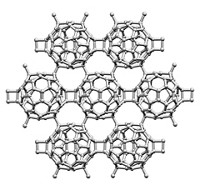Advertisement
Grab your lab coat. Let's get started
Welcome!
Welcome!
Create an account below to get 6 C&EN articles per month, receive newsletters and more - all free.
It seems this is your first time logging in online. Please enter the following information to continue.
As an ACS member you automatically get access to this site. All we need is few more details to create your reading experience.
Not you? Sign in with a different account.
Not you? Sign in with a different account.
ERROR 1
ERROR 1
ERROR 2
ERROR 2
ERROR 2
ERROR 2
ERROR 2
Password and Confirm password must match.
If you have an ACS member number, please enter it here so we can link this account to your membership. (optional)
ERROR 2
ACS values your privacy. By submitting your information, you are gaining access to C&EN and subscribing to our weekly newsletter. We use the information you provide to make your reading experience better, and we will never sell your data to third party members.
Synthesis
Science Concentrates
March 28, 2005
| A version of this story appeared in
Volume 83, Issue 13
A new, potentially tunable, versatile capsule for storing single molecules could prove useful for numerous applications, including catalysis and chemical sensing. Dubbed a "molecular apple peel" by creators Ivan Huc of the European Institute of Chemistry & Biology, Pessac, France, and colleagues, the capsule is formed by a helical molecule with a wide diameter in the middle and narrower diameters at the top and bottom (Angew. Chem. Int. Ed. 2005, 44, 1954). The group synthesized a molecule consisting of a central unit of three pyridine monomers, tagged at each end with a unit of two quinoline monomers. Using NMR techniques and X-ray crystallography, they were able to show that this "apple peel" encapsulates a single water molecule (shown). The group envisions developing variants of the capsule for molecules of different sizes and shapes.
Two-dimensional high-performance liquid chromatography (2-D-LC) is a promising alternative to the traditional 2-D gel electrophoresis approach for proteomics studies, in which all the peptides and proteins in cells and entire genomes are surveyed. However, 2-D-LC's lengthy analysis times--ranging up to days per analysis--have made it impractical for many applications. Now, Dwight R. Stoll and chemistry professor Peter W. Carr of the University of Minnesota, Twin Cities, have devised high-temperature ultrafast conditions, instrument modifications, and ultrastable chemically bonded stationary phases that reduce overall 2-D-LC analysis times to tens of minutes (J. Am. Chem. Soc. 2005, 127, 5034). The changes serve to greatly speed up reversed-phase gradient separation, which is typically used as 2-D-LC's second dimension. The researchers believe the new system is capable of generating high-resolution chromatograms of proteomics samples in a shorter time and with simpler instrumentation than has been possible previously. Optimization of this system will "make 2-D-LC a practical approach for the analysis of complex biological mixtures," they write.
The largest closed-cage carborane known to date--one containing 14 vertices--has been synthesized by a team of chemists led by Zuowei Xie of the Chinese University of Hong Kong (Angew. Chem. Int. Ed. 2005, 44, 2128). Carboranes are carbon-boron polyhedral clusters that can be readily derivatized and are being used in applications ranging from boron cancer therapy to catalysis to nanomachine fabrication. Carborane chemistry has focused mostly on the icosahedral C2B10H12, which has 12 vertices, but recently a few 13- and 14-vertex metallacarboranes have been made in which one or two vertices are occupied by a metal atom. Xie and coworkers wondered if larger carboranes could be made by simply inserting extra BH vertices, and they in turn devised a synthetic strategy. The researchers reacted (CH2)3C2B10H10, which has a propylene chain bridging the two cage carbon atoms, with Li to form an isolable, open-cage ionic dimer. Further reaction with HBBr2·S(CH3)2 yielded the 14-vertex carborane, (CH2)3C2B12H12, as well as a 13-vertex carborane, (CH2)3C2B11H11. The researchers believe even larger closed-cage carboranes are possible using their approach.
Many proteins function as part of a complex, but the techniques normally used to fish out protein interactions, such as affinity-based methods, can falsely identify interactions or miss weak ones. A new method reported by Christoph Thiele and coworkers at Max Planck Institute of Molecular Cell Biology & Genetics in Dresden, Germany, avoids some of those problems. They find protein interactions using three new synthetic amino acids that can cross-link nearby proteins following activation with ultraviolet light (Nat. Methods 2005, 2, 261). The new amino acids, which resemble isoleucine, leucine, and methionine, contain diazirine rings that form reactive carbenes when activated with UV light. These photo-amino acids can be directly incorporated into proteins by the normal cellular machinery. (Photo-leucine, top, is shown with leucine for comparison.) Using the photo-amino acids, the research team identified a previously unknown interaction of the progesterone-binding membrane protein PGRMC1 with Insig-1, a regulator of cholesterol homeostasis.
A low-power chemical sensor that relies on measuring the capacitance of single-walled carbon nanotubes (SWNTs) has been shown to be fast, highly sensitive to a broad range of chemical vapors, and completely reversible (Science 2005, 307, 1942). Eric S. Snow and coworkers at the Naval Research Laboratory, Washington, D.C., coat a network of SWNTs with a thin layer--as thin as a single molecular monolayer--of a chemoselective material. This nanotube network serves as an array of nanoscale electrodes in a capacitor. When the system is exposed to a chemical vapor, the analyte molecules adsorb to the nanotubes and become polarized, leading to a measurable jump in the device's capacitance. The NRL researchers report that, compared to a commercial sensor, they can detect acetone and dimethylmethylphosphonate (a simulant for the chemical nerve agent sarin) at significantly lower levels and with much faster response times (a few seconds rather than minutes). Snow says the team is working with a sensor company to further develop the technology.





Join the conversation
Contact the reporter
Submit a Letter to the Editor for publication
Engage with us on Twitter